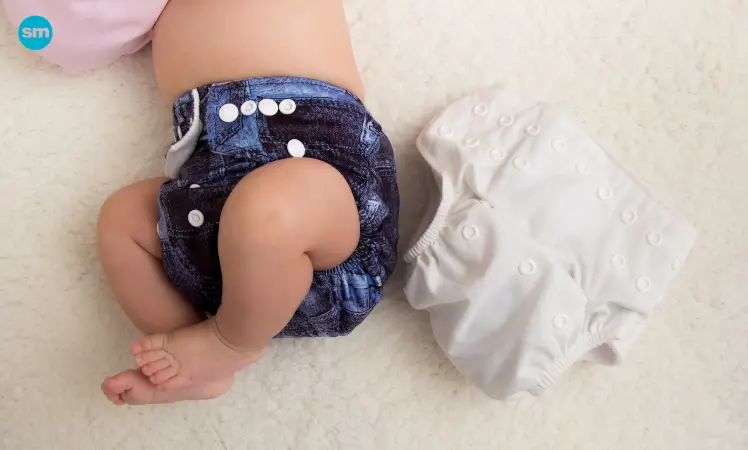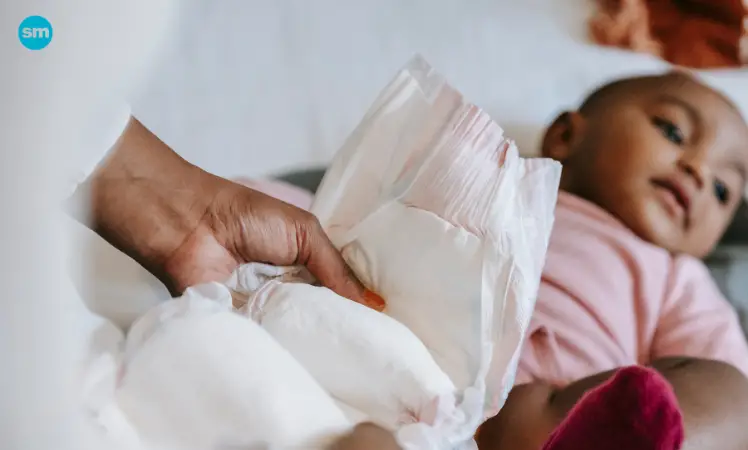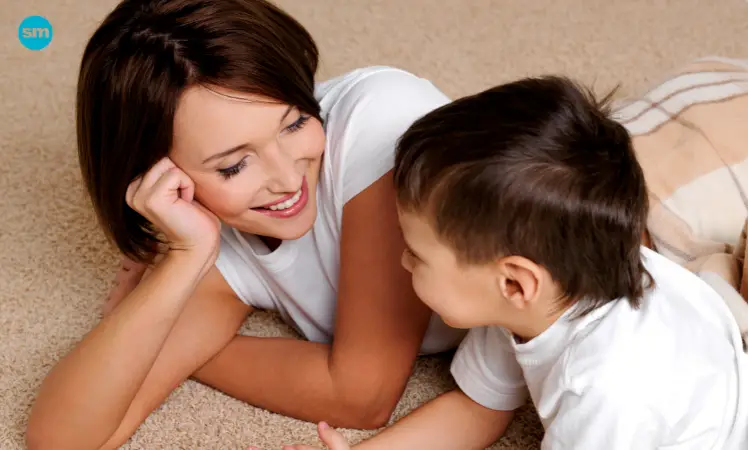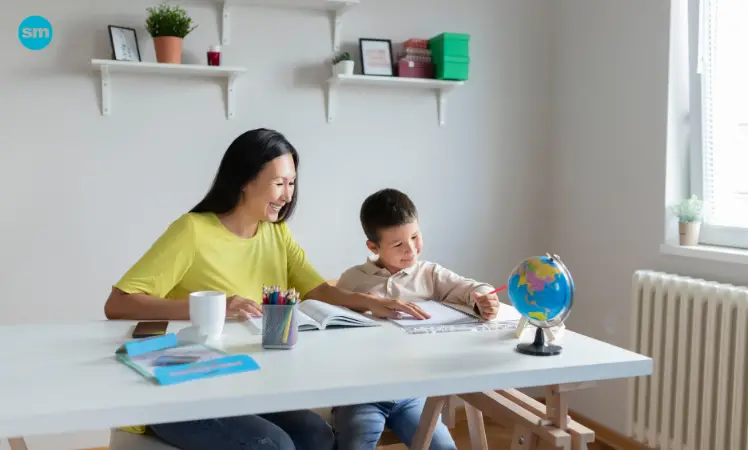Pull-Ups Diapers Or Normal One – When To Use Pull-Ups?

Last Updated on September 1, 2023 by Lori Pace
Little bottoms need to change a lot of diapers. Diapering can be difficult, just like the first time parents who experience many firsts. There are many options for every lifestyle and need. In short, many of the same features are shared between diapers and pull-ups. Pull-ups are similar to underwear, except that they can be pulled up or down and not secured with taped strips. Both have their advantages, but parents must find the best solution for their child. Every parent wants to make the best choices for their children. Diapering is no exception. As your baby grows, so will your diaper choices.
What Are Pull-Up Diapers?

Pull-up diapers can be described as diaper pants with elastic bands. They are made of the same material as diapers, but they can be pulled up or down like underwear. These are usually used by toddlers who are either in the beginning of potty-training or actively potty training. Pull-ups encourage independence on the potty because they are easy to slip up and down.
However, new generation pull-ups are becoming increasingly popular with parents. These are also known as nappy pants and come in sizes starting at Size 3. Nappy pants can be used to replace traditional diapers, but not for potty training. These are especially useful for active toddlers or when diaper-changing older children becomes a struggle of wills.
Pull-ups are lighter and less bulky than regular diapers. They also come in fun designs and colors that little ones will love. Pull-ups can be used in conjunction with potty training by some parents. They are often used during naptime and at night to prevent accidents.
What’s The Difference Between Pull-Up Diapers And Normal Diapers?
Pull-ups and disposable diapers work almost exactly the same. Because they are made from the same material, pull-ups are essentially a different type of diaper. The differences between them go beyond that. Let’s examine the five major differences between them in terms of design, absorbency, price, size, and use.
Design

The most noticeable difference between normal and pull-up diapers is their design. Regular diapers have two tabs that hold them in place. They are designed to provide a snug fit and can not be pulled up or down. Taped nappies must be removed first. This makes them ideal for toddlers and babies as they don’t move once they are on.
Pull-ups, on the other hand, have an elastic waistband which allows for easy up/down like underwear. Pull-ups are easier to put on and remove, which makes them ideal for standing up diaper changes. They are often designed with rip-away sides that can be removed for cleaning up after an accident. They are like underwear and can be pulled up or down by children without the need to take them off. This makes them extremely useful for young children transitioning to potty training.
Absorbency
Both diapers and pull-ups are made from multi-layers, which absorb liquids. They also have a waterproof outer layer. Parents who have tried both claim that pull-ups are less absorbent and more susceptible to leakage than diapers.
This is a big factor, however. Pull-ups are made to be more absorbent than regular ones and are designed for toddlers who use them at night. Not all pull-ups look the same as standard diapers.
Some brands are better for kids and more comfortable than others. Consider your child’s height and frequency of peeing (especially at night), and what brand they use. It may take some trial and error to find the right brand for you.
Price
Pull-ups tend to be more expensive than diapers but the price difference between the two is not as significant as you might think. Remember, however, that while the price of diapers can be affected by the brand you choose, the style and features of the diapers will also play a significant role.
There will be diapers that are significantly cheaper than those of the major brands. However, the price difference between a brand-name diaper and a generic pull-up diaper will be more noticeable.
Size
You probably know that disposable diapers are available in sizes 1- 6 and are based upon baby weight. Size 1 diapers can be used for babies weighing between 8 and 14lbs, while size 6 diapers are suitable for children weighing more than 35 pounds.
Pull-ups, on the other hand, are similar in size to clothes and have weight recommendations. Pull-up diapers are not designed for infants or newborns. Don’t expect to find smaller sizes when shopping for regular diapers. Many brands offer pull-ups of four sizes, 12m-18m (14 to 26 lbs.), 2T-3T (18-34 lbs. ), 3T-4T (32-40 lbs. ), and 4T-5T (22-42 lbs. ).
Usage
Pull-ups are often used by parents when their children start potty training, usually around age two.
Many brands claim that they are as good as diapers at nighttime, but many parents have found this to be false. Pull-ups can be used overnight but they will not absorb as well or handle leaks as diapers.
Besides, pull-ups are also useful for babies learning to crawl, crawl, stand and walk. And, pull-ups are easy to slip up and down. This makes it easier to change your baby’s diapers than having to hold them in place.
Pull-ups are also smaller than traditional models, making them more convenient for daytime use, as well as when you’re out and about.
Pros And Cons Of Using Pull-Ups Vs Diapers
| Normal Diapers | Pull-Ups |
| Pros – Has a range of sizes and absorbency – Readily available – More absorbent – Better leak protection – Cheaper than pull-ups | Pros – It’s easier to put on active babies – Promote independence – Can be used for potty training – Come in appealing designs – Available in bigger sizes |
| Cons – Stand-up changes are more challenging – Can cause skin rashes when worn at a long period of time | Cons – Slightly more expensive Low cut in the back – Reportedly less absorbent and less efficient in handling leaks |
When Should I Use Pull-Ups?
Pull-up diapers look exactly like their name suggests. They are made of regular underwear and pull up like regular pants. They are typically made from a thinner material than regular diapers, but they still retain enough water to absorb any potential mess.
These days, pull-ups are very popular with parents because they are easy to use. They can be used to resist diaper-changing tots. There is no fussing with taped sides when wrestling a toddler or active baby. Pull up diaper pants are a good choice for little ones who have mastered crawling, crawling and standing.
Pull-ups are also useful for parents as an alternative to night training or potty training underwear. In short, pull-ups make your child feel uncomfortable in the wet, which can encourage them to use the potty instead of pooping in their nappy.
On the other hand, pull-ups are easy to put on and take off when your toddler goes to the bathroom. They are a clear step away from diapers and can give your kids a sense of “bigness”, which can be motivating them when potty training. However, pull-ups are not universally accepted as a method of potty training. To speed up toilet training, some parents decide to quit diapers and use large-kid underwear instead.
Pull-ups look very similar to regular diapers so some children don’t know what the difference is. Children tend to minimize the unpleasant feeling and discomfort of an accident. It is more painful to wear wet underwear than a pull-up diaper. This can make it more difficult for them to use the bathroom when they have to.
Using Pull-Ups For Toilet Training
Your little one will be proud to learn how to use the potty. There is no one-size-fits all approach to nighttime and toilet training. It is not necessary to change from diapers to pull-ups when potty training.
There are some things to think about if you believe that pull-ups can be useful for your child when they learn how to use the toilet. If you decide to go this route, pull-ups can be used as training underwear for your child. Your child can practice pulling the pull-ups up and down independently. This will boost their confidence and motivate them to reach this milestone. It is important to teach them that diapers for big-kids are not meant to prevent accidents. However, the goal is to get to the toilet.
Another option is to continue to use regular diapers at night, but use pull-ups during daytime. This will help your child learn to use the bathroom more confidently. You can eventually switch to pull-ups at night. They can be useful for some children, but it is important to recognize that each child is unique.
Some children treat a pull-up like regular diapers, which can slow down potty training.
However, if your child has been doing pull-ups well, don’t keep him in them for too long. He should be able to recognize that wearing underwear is the next step. How do you tell when your child is ready to stop wearing pull-ups and transition to underwear? When your child is telling you that he needs to go to the bathroom and is not getting wet (although a few accidents are acceptable), it’s time for him to change into underwear.
Remember that potty training doesn’t happen overnight. The American Academy of Pediatrics recommends that children not start toilet training before they are two years old. When planning your approach to toilet training, take into account your child’s personality and behavior as well as your parenting style.
It is important to reinforce this transition and keep it consistent. Once your child has changed from diapers to pull ups, you should keep him away from diapers. Your child may become confused if he has to switch between diapers and pants.
Final Remark
What matters is that your child feels comfortable in them. Choose a brand that is gentle on skin for your child. To keep your baby comfortable and dry, make sure to change them regularly. Diaper rashes can be caused by a soiled or wet diaper being left on for too long.
Each option has its advantages and disadvantages. Your experience will depend largely on which brand you choose. You are the only one who can decide if switching is right for you. Your family’s unique circumstances and lifestyle as well as your child’s age and stage will all play a role in your decision. You will be able to make an informed decision by keeping this information in mind.








